To quickly get operational on the amateur bands between 1 and 10 GHz with our new 3 m dish, we have purchased a 5 band ring dish feed from RF Hamdesign. The ring feed antenna is a loop over a ground plane, and a multiband version of this antenna can be made by stacking several loops inside each other. A good technical article on the construction and theory of these antennas is presented by Galuscak and Hazdra, and build details are found in the long version.
We purchased the 5 band ring feed as it seems to be a decent compromise between multi-band coverage and ease of use. It even allows for legal limit operation (in Norway) on the bands that require it. However, beyond frequency coverage, return loss and power handling there was not much in the way of specifications available. Therefore we have conducted some measurements in order to allow other amateurs to make a more educated guess at what they can expect from this multiband dish feed.
Thanks to LB6RH we were able to measure the antennas in an anechoic chamber at the local university, NTNU. We have attempted to find the 3 dB and 10 dB radiation angles in order to see how well it should perform when used to illuminate a dish.
- 5 Band ring feed positioned for horizontal pattern cut.
- Test antenna placement for horizontal radiation pattern cut.
- 5 Band ring feed positioned for vertical pattern cut.
- Test antenna placement for vertical radiation pattern cut.
We set up the test using a ETS Lindgren Model 3117 horn as the test antenna. The pattern is measured by turning the Device Under Test (DUT)- platform, where the 5 band ring dish feed is placed on in the image above, by use of a mechanical rotor. At each azimuth point a network analyzer measures the isolation between the test antenna and the DUT-antenna. Once the DUT has turned 360 degrees a relative pattern is derived.
Horizontal polarisation:
Vertical polarisation:
Finally we compare these results to the 3 dB and 10 dB values that come attached when you buy the antenna.
Comparison of measured and specified horizontal radiation angles:
| Frequency [MHz] | Specified H 3 dB angle | Measured H 3 dB angle | Specified H 10 dB angle | Measured H 10 dB angle |
|---|---|---|---|---|
| 1296 | 67 | 65.3 | 111 | N/A |
| 2320 | 59 | 65.3 | 104 | 124.0 |
| 3400 | 46 | 53.7 | 107 | 97.6 |
| 5760 | 44 | 40.7 | 109 | 108.6 |
| 10300 | 44 | N/A | 109 | N/A |
Comparison of measured and specified horizontal radiation angles:
| Frequency [MHz] | Specified V 3 dB angle | Measured V 3 dB angle | Specified V 10 dB angle | Measured V 10 dB angle |
|---|---|---|---|---|
| 1296 | 72 | 80.2 | 144 | 155.2 |
| 2320 | 68 | 95.0 | 132 | 163.6 |
| 3400 | 43 | 67.9 | 94 | 119.0 |
| 5760 | 44 | 37.9 | 91 | 90.4 |
| 10300 | 44 | N/A | 91 | N/A |
Although it is possible to read a radiation angle out from the plots, we chose to let a script perform the measurement for us. The script will fail if it is unable to determine a single peak, which indicates lobe skew or split. Some caution should be shown when considering the measurements that yielded N/A results.
The measurements fall reasonably close to the specified values, although there is a significant difference in the cleanness of the horizontal and vertical patterns. Based on these results we will be using the ring feed in vertical mode. In conclusion the RF Hamdesign ring dish feed seems to be a good and reasonably priced way to get operational on many GHz range bands quickly.
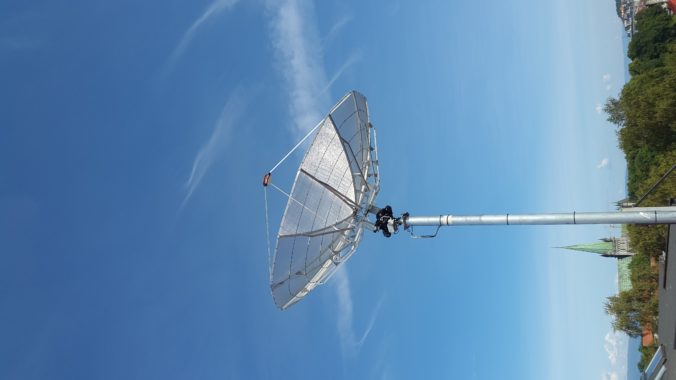
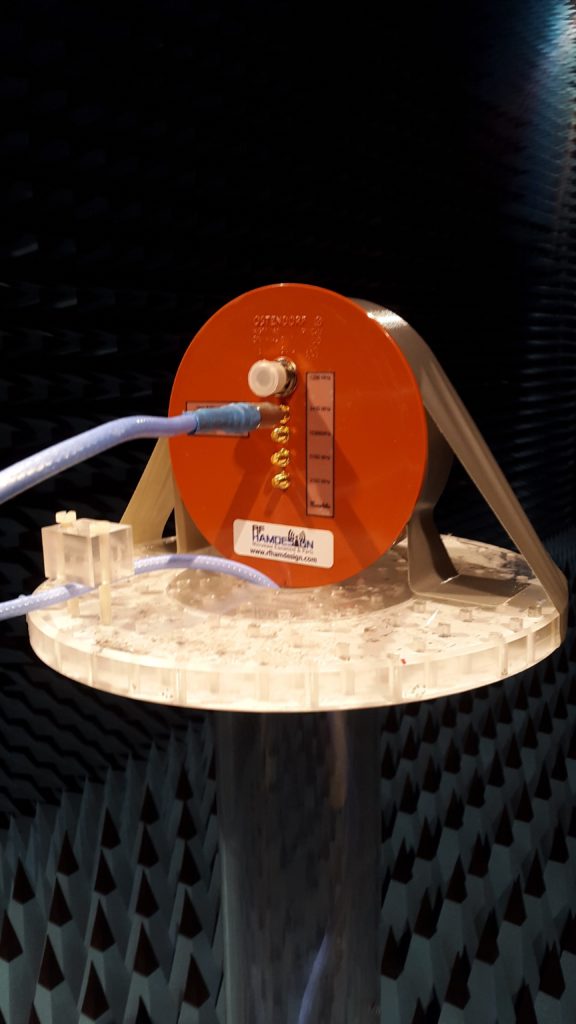
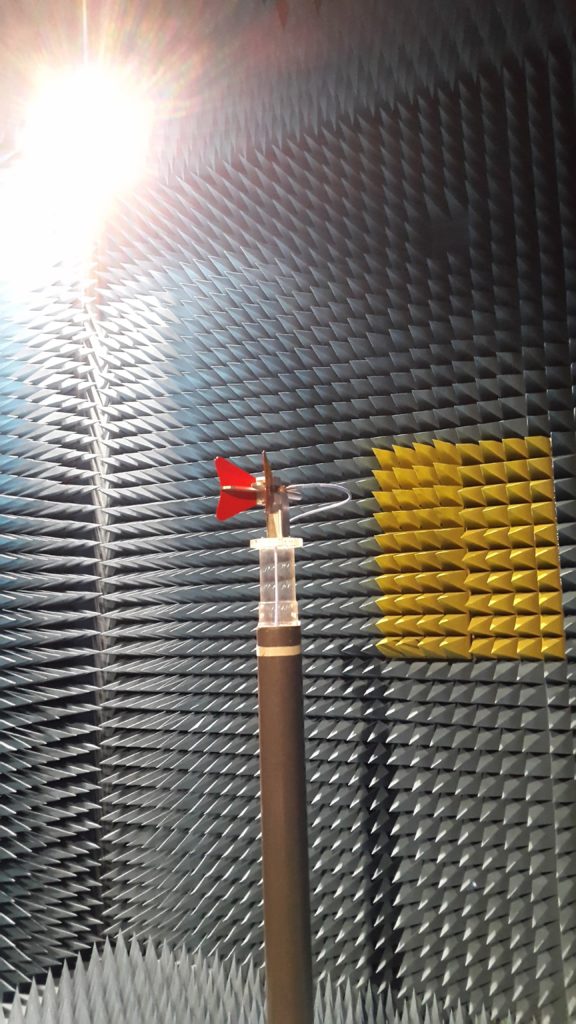
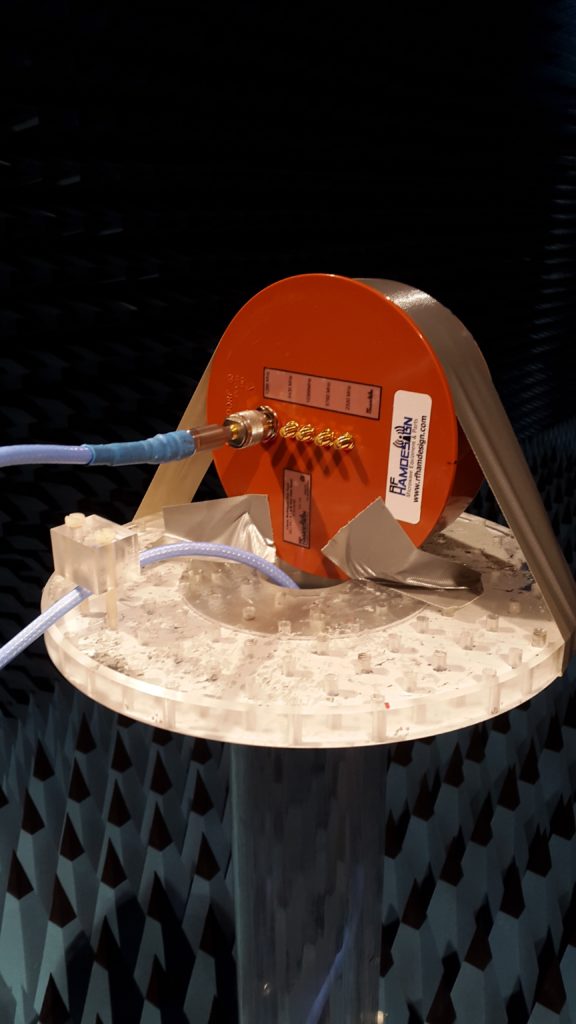
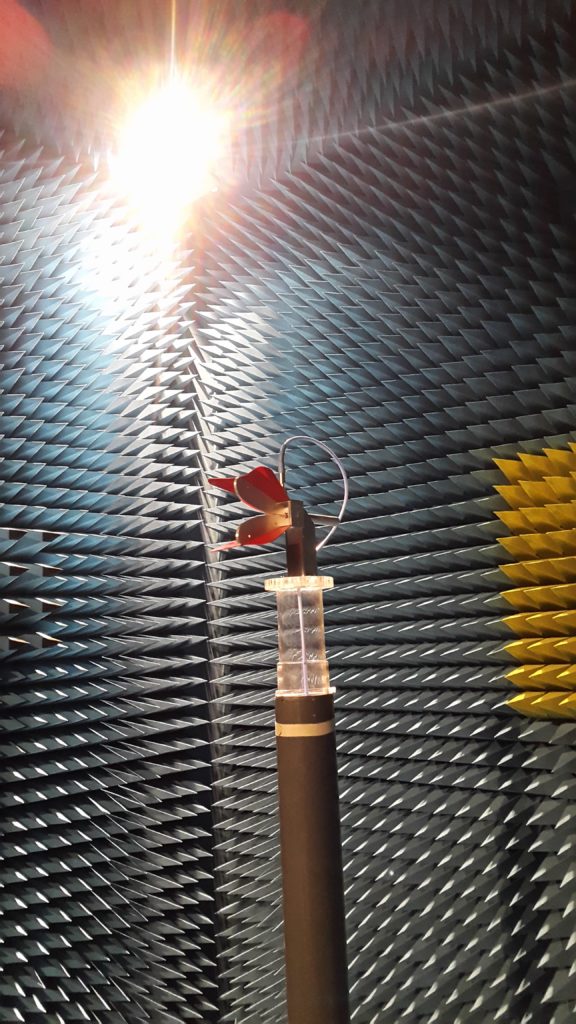

0 Comments
3 Pingbacks